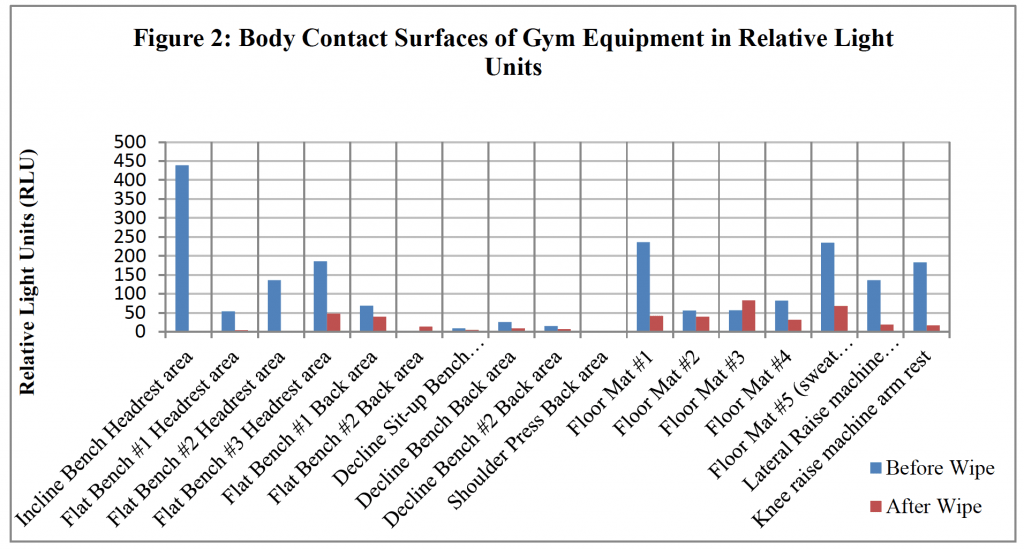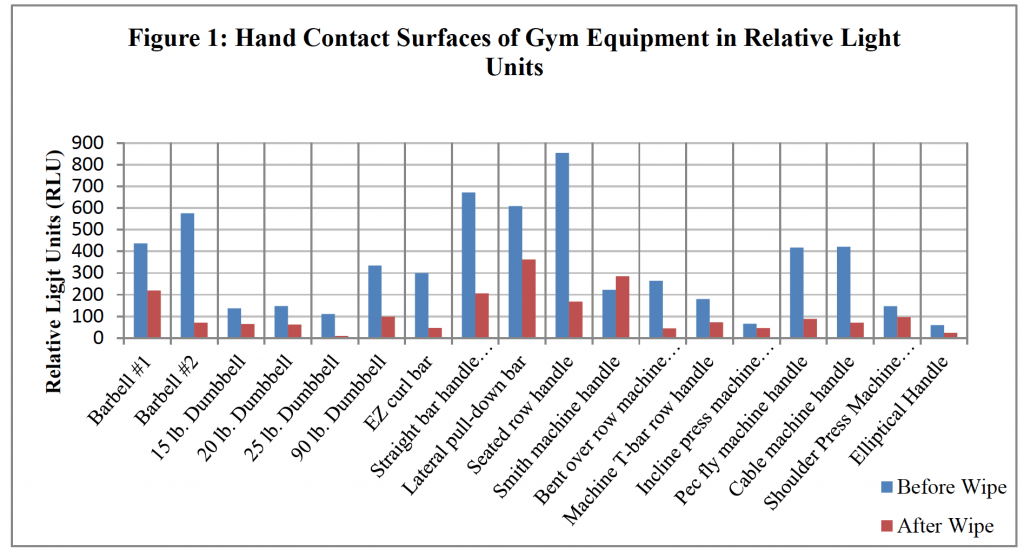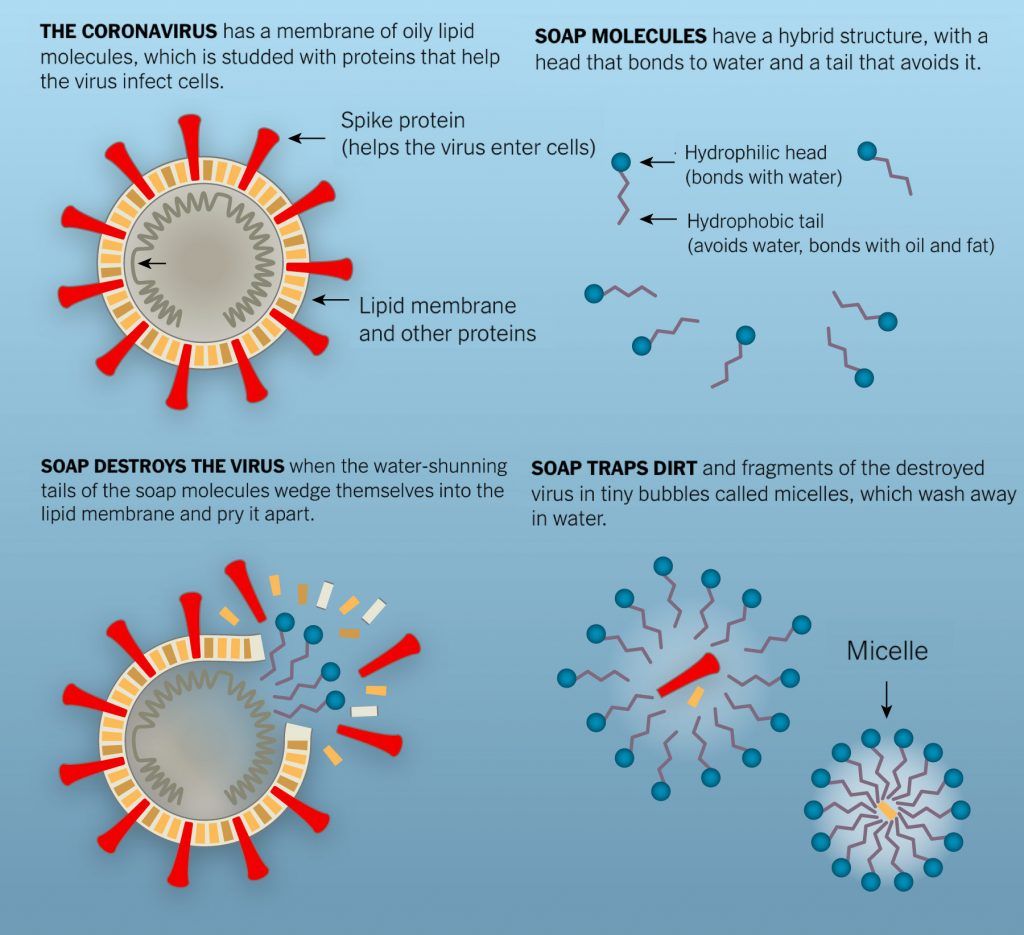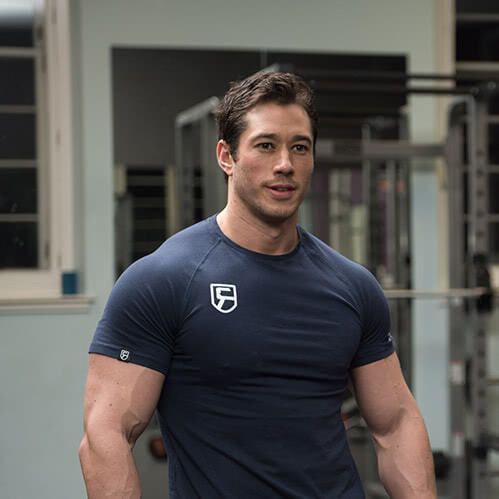
YOUR FITNESS BLOG
Protect Yourself Against Coronavirus (covid-19) In The Gym
Introduction
With the profound, global impact of covid-19, there are appropriate and urgent measures being taken to slow the spread of this virus. Transmission of bacterial and viral pathogens like covid-19 are known to occur through hand-contact surfaces and via respiratory secretions [6]. The coronavirus, which symptoms include dry coughs, sore throat, fever and breathing difficulties, can contaminate surfaces when an infected person comes into hand or bodily contact with surfaces or through sneezing or coughing on surfaces [6]. Additionally, respiratory droplets caused from sneezing or coughing can also spread covid-19 as droplets can land in the respiratory tract of others via inhalation, or entry into nose or mouth [6].
Fitness facilities can serve as settings to harbour and transmit viral cultures because of contact surfaces on exercise equipment and enclosed space with potential for airborne transmission [5]. Given this, the role of good hygiene practices are critical strategies in slowing and preventing further transmission of covid-19 [4, 6]. Simple hygiene practices like washing one’s hands and disinfecting exercise equipment surfaces before and after use are essential and effective practices to combat viral transmission [5]. The purpose of this article is to provide insight into how viruses, like the coronavirus, spread within fitness facilities and what can be done to defend against the risk of transmission.
Coronavirus (Covid-19) In Gym Environments
Compared to other indoor environments, fitness facilities like gyms offer a unique setting for pathogenic microorganisms because of repeated equipment contact as well as relatively higher humidity [5]. As gym-goers use exercise equipment (i.e. dumbbells, barbells, exercise machines, exercise mats) pathogens can be easily transferred from surface to human [5]. A recent study published in the New England Journal of Medicine (2019) showed that the coronavirus can survive up to 2-3 days on steel and plastic surfaces, commonly used materials in exercise equipment [6]. Therefore, the combination of high frequency equipment contact and prolonged pathogenic survival periods can increase the potential for viral or bacterial transmission [5].
To understand the potential transmissibility of covid-19 in gym settings, we can look at research designed to investigate the presence of viral and bacterial communities specifically within gym environments. A study by Mukherjee and colleagues in 2014 set out to understand if different surfaces within fitness centres act as potential reservoirs for pathogens [3]. In their study, surface swabs were collected from various fitness facilities in the United States from contact surfaces on different exercise equipment including treadmills, elliptical machine, stationary bikes, dumbbells, handrails, and toilet handles [3]. Swab sticks were analysed within four hours of sampling using DNA extraction to reveal bacterial presence [3].
Results of this study found an abundance of bacteria (Firmicutes phyla, Proteobacter, Actinobacteria) primarily of human (flora) and environmental (water, durst, soil, air) origin [3]. Additionally, potential pathogenic bacterial types were identified including Salmonella, Staphlococcus, Klebsiella, and Micrococcus [3]. Many of the pathogenic bacteria found were commonly found within indoor air environments because of the relatively higher humidity [3]. The presence of these different pathogens would increase health risk among susceptible people (i.e. individuals with pre-existing health conditions). The authors note that variability in personal hygiene, surface cleaning and equipment disinfecting may all be reasons for the diverse bacterial presence in these facilities [3].
Protecting Against Covid-19 In Gyms
Use Gym Equipment Sanitisers
Cleaning compounds, such as antibacterial wipes or sprays, are typically supplied in public gyms as part of hygiene policy to disinfect equipment after use. Despite the encouragement of hygiene practices to prevent viral and bacterial spread, these are often not used. Given this, the potential for the coronavirus to spread on contact surfaces within gyms is heightened if proper sanitisation is not applied [5]. Education into how cleaning compounds can help to prevent the spread of covid-19 transmission may assist in promoting their use for prevention.
A study conducted by Tam and Sidhu (2014) at the School of Health Sciences in British Columbia, Canada examined the efficacy of disinfectant wipes specifically on gym contact surfaces [5]. In their study, the authors conducted the experiment at a public gym and swabbed various exercise equipment including exercise machines, barbells, dumbbells, exercise mats and benches. Swabs were taken immediately after equipment use without sanitisation as well as swabbing equipment immediately following sanitisation with ammonium-based wipes [5]. The authors used an Adenosine Triphosphate (ATP) Bioluminescence Analyser, a method used to analyse sanitisation by measuring the energy and corresponding light from the swab samples [5]. As ATP is the basic building block of energy for microbes and biological organisms, this instrument works by illuminating ATP detected in swab samples [5]. Measured as Relative Light Units (RLUs), the higher the number of RLUs, the greater the contamination [5].


Results of this study showed that disinfectant wipes made a statistically significant difference when applied to exercise equipment contact surfaces [5]. When the sanitisation wipes were not applied to exercise equipment, average values for RLUs for hand and bodily contact were 330 and 113 respectively [5]. When sanitiser wipes were applied to equipment directly after use, average values fell to 112 and 25 respectively (see diagram above) [5]. These results indicate a clear benefit to sanitising exercise equipment before use to reduce the risk of viral or bacterial infection.
Use Soap And Water Before And After Workouts
Hand washing with soap and water before and after a workout may seem like an over-simplified action to combat the transmission of the coronavirus, however it is a first line defence against this virus. Soap is a combination of fat or oils, water, and an alkali [1]. It is made of small molecules, each with a head that bonds to water (hydrophilic) and a tail that deters water (hydrophobic) [1]. When soap molecules enter water then assemble to form small bubbles called micelles [1]. Pathogens like covid-19 have lipid membranes (layer of cells that act like a boundary) with proteins studded in them that allow the virus to infect cells [1].
Washing your hands with soap and water surrounds microorganisms on the skin with soap [1]. The hydrophobic tail of the soap molecule avoids the water and gets stuck into the lipid membrane in the virus breaking it apart (see diagram below). When the lipid membrane breaks apart, important proteins leak from the ruptured membrane into the water and kill the virus [1]. The micelles also trap dirt and fragments of the virus that were killed by the soap and wash them away [1].

To show the effectiveness of hand washing with plain soap and water, Burton and colleagues (2011) published a study in The International Journal of Environmental Research and Public Health that showed hand washing with plain (non-antibacterial) soap and water was highly effective at reducing bacterial presence on the hands of contaminated subjects [1]. In their study, the authors took 20 subjects and contaminated their hands by touching railings and door handles in public places [1]. Each subject completed this procedure 24 times giving 480 samples [1]. Subjects were then allocated to either a no hand washing, hand washing with soap and water, or hand washing with water group [1]. Results showed hand washing with soap and water reduced the presence of bacteria to 8% compared to no hand washing (44% bacterial presence) and hand washing with only water (23% bacterial presence) [1]. The strong association between hand washing with soap and water and reducing bacterial contamination in this study supports this actionable behaviour for fending off coronavirus transmission in gym settings [1].
Technique in hand washing is important for it to be effective [1]. Building up a good lather of soap is important for the soap molecules to cover a greater surface area [1]. Scrubbing the back of the hands as well as fingers, between fingers, fingernails and around thumbs is proper technique to ensure skin that may have come into viral contact is cleaned [1]. An application time of 20 seconds is advocated for the soap and water to successfully disinfect.
Use Hand Sanitisers Before And After Workouts
After a workout, hand washing with soap and water is the preferred hygiene practice to combat the coronavirus over hand sanitisers as certain microbes are more resilient to alcohol-based sanitisers compared with soap and water [1]. However, under circumstances where hand washing with soap and water is not available, alcohol hand sanitisers should be used after contacting exercise equipment to disinfectant the skin. Alcohols like ethanol act similarly to soap and water to pry apart and destroy the lipid membrane and denature proteins of a virus or bacteria [2, 4]. Most alcohol-based hand sanitisers contain either isopropanol, ethanol, n-propanol, or a combination of these ingredients [2]. Importantly, alcohol concentration in sanitisers does seem to influence its effectiveness. Research shows that level of antimicrobial effectiveness is greatest with ethanol concentrations of 60% to 85%, isopropanol concentration of 60% to 80%, and n-propanol concentrations of 60% to 80% [2].
To demonstrate the potential viral defence properties of alcohol-based sanitisers within a gym setting, a study by Siddharta and colleagues (2017) published in the Journal of Infectious Diseases investigated the efficacy of alcohol-based formulations against different viruses including different types of coronavirus [4]. In their study, several viruses including hepatitis C, ebola, human influenza, and acute respiratory syndrome coronavirus (SARS-CoV) and Middle-East respiratory syndrome coronavirus (MERS-CoV) were cultured and tested against 2 different alcohol-based formulations at different concentrations [4]. The first alcohol-based sanitiser (formulation I) used an ethanol base and the second alcohol-based sanitiser (formulation II) used an isopropyl based alcohol [4]. When the authors tested the effectiveness of alcohol-based sanitisers against coronaviruses, formulation II at 30% concentration and formulation I at 40% concentration were both effective at inactivating each coronavirus [4]. This study supports the use of alcohol-based sanitisers as a viable strategy against covid-19 in a gym environment.
Similar to washing your hands with soap and water, efficacy of alcohol-based hand sanitisers are dependent on its application technique [2]. Hand sanitisers should be applied to the palms and rubbed over the entire hand until both hand surfaces become completely dry [2]. Sanitiser application time is similar to soap and water in that 25 to 30 seconds are shown to be effective, whereas 15 seconds or less may be insufficient to disinfect [2].
Summary
The emergence of the coronavirus (covid-19) brings with it critical hygiene practices to reduce the risk of transmission. The gym environment has the potential to spread bacteria and viruses like covid-19 if proper sanitisation is not met. Gym equipment like cardio machines, benches, dumbbells, barbells, and exercise mats are touched repeatedly and viruses can pass through contact, skin and sweat [5]. Fundamental hygiene practices like sanitising contact surfaces on exercise equipment after use as well as washing hands with soap and water or an alcohol-based hand sanitiser before and after a workout are proven to be highly effective in combatting harmful pathogens [1, 3, 4, 5]. Moreover, the future prevention of emerging diseases will rely heavily on these same hygiene practices to prevent the spread of infection within gym environments.
For more information on our personal training service please click here.
References:
[1] Burton, M. et al. 2011. The Effect of Handwashing with Water or Soap on Bacterial Contamination of Hands. January. Vol. 8. No. 1. pp.97-104. The International Journal of Environmental Research and Public Health.
[2] Gold, N. A. and Avva, U. 2020. Alcohol Sanitiser. February. StatPearls.
[3] Mukherjee, N. et al. 2014. Diversity of Bacterial Communities of Fitness Center Surfaces in a U.S. Metropolitan Area
[4] Siddharata, A. et al. 2017. Virucidal Activity of World Health Organization-Recommended Formulations Against Enveloped Viruses, Including Zika, Ebola, and Emerging Coronaviruses. March. Vol. 215, No. 6, pp.902-906. Journal of Infectious Diseases.
[5] Tam, V. and Sidhu, B. 2014. The Efficacy of ATP Removal on Gym Contact Surfaces using Disinfectant Wipes. Bcit Environmental Health Journal.
[6] Van Doremalen, N. et al. 2019. Aerosol and Surface Stability of HCoV-19 (SARS-CoV-2) Compared to SARs-CoV-1. British Medical Journal.

Did you find this content valuable?
Add yourself to our community to be notified of future content.

